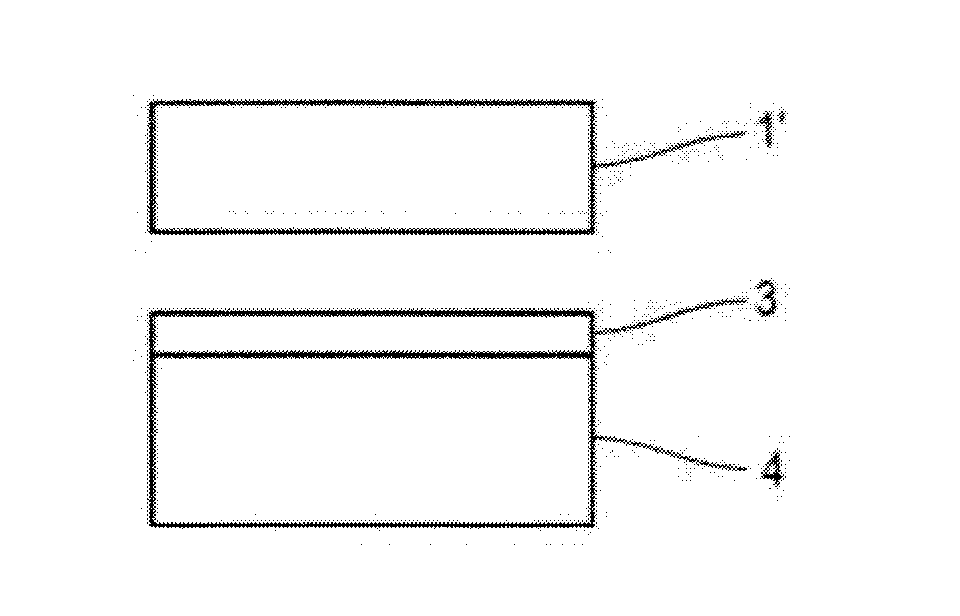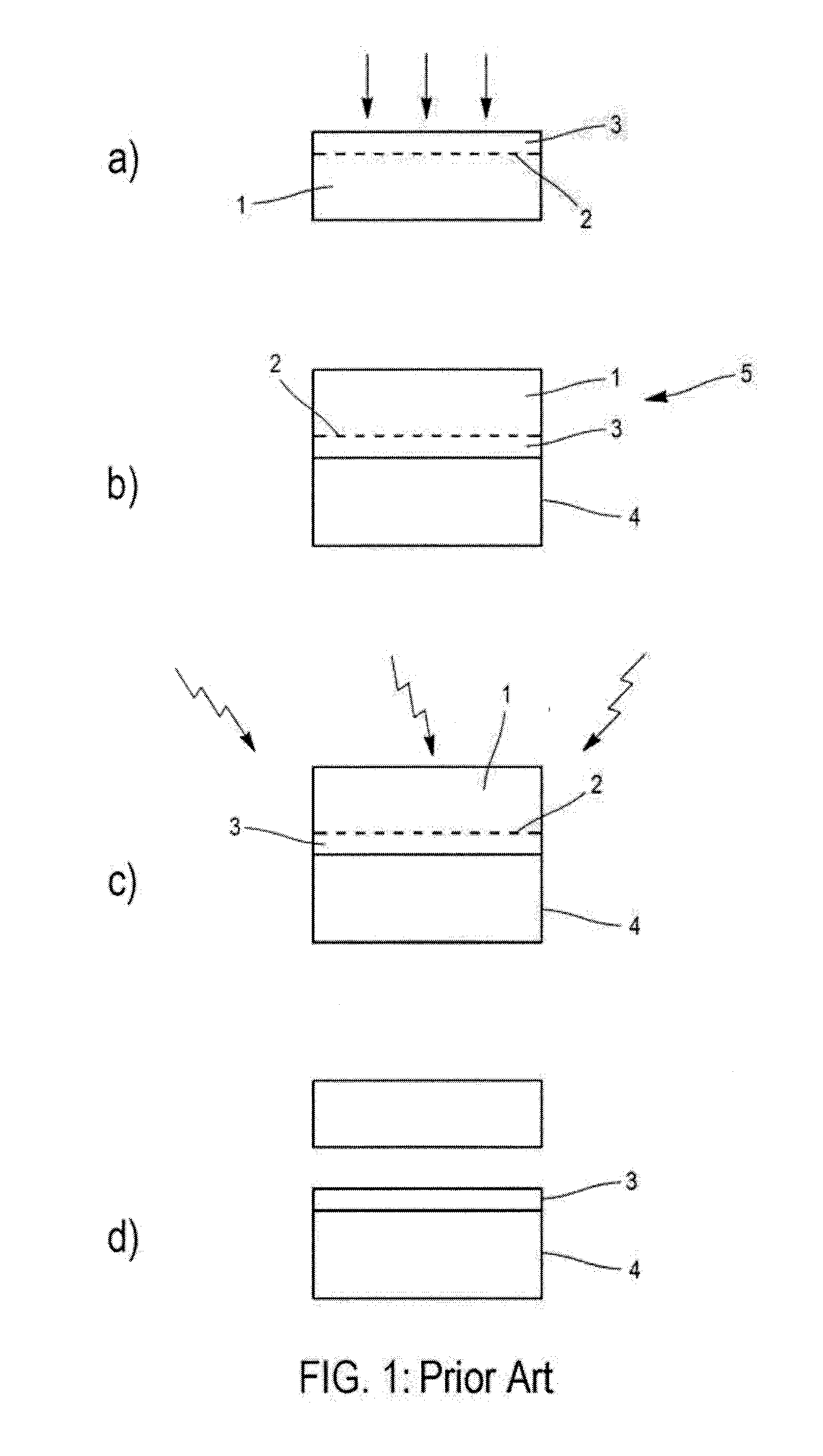Method for transferring a useful layer
- Summary
- Abstract
- Description
- Claims
- Application Information
AI Technical Summary
Benefits of technology
Problems solved by technology
Method used
Image
Examples
example 1
[0105]A batch composed of 25 assemblies to be fractured 5, all identical to that of the example 1, is placed in an oven, in an atmosphere of nitrogen, having a temperature of 350° C., for 2 hours.
[0106]After the annealing, the fracture has not been initiated and the batch is removed from the oven and placed at ambient temperature in a wet atmosphere (45% humidity) for 1 hour.
[0107]The batch is subsequently placed in the oven at 250° for 2 hours. After this annealing, it is observed that all the wafers have spontaneously fractured.
[0108]Furthermore, the surface states of the useful layers are analyzed and exhibit thickness variations whose maximum amplitude over a wafer is less than 0.2 nm.
example 2
[0109]The experiment in the example 2 is reproduced, but between the two annealing steps the assemblies to be fractured 5 are exposed to a chemical attack of the wafer edge with a solution composed of water and of HF diluted to 10%, instead of the processing in the wet atmosphere.
[0110]The measurements performed on the useful layers 3 are identical to those in the example 1.
example 3
[0111]A batch of substrates to be fractured 5 is prepared in a similar manner to the two preceding examples, and placed in an oven under an inert atmosphere at 350° for 2 hours.
[0112]Without interrupting this annealing process, the temperature is subsequently reduced to 250° and the annealing continued for two hours at this temperature. At the start of this phase at 250°, water in the form of steam is injected into the atmosphere of the oven.
[0113]After the annealing, it is observed that all the wafers have been fractured. The measurements of mean thicknesses and of non-uniformities performed on the useful layers are identical to that of the example 1 or 2.
PUM
 Login to View More
Login to View More Abstract
Description
Claims
Application Information
 Login to View More
Login to View More - R&D
- Intellectual Property
- Life Sciences
- Materials
- Tech Scout
- Unparalleled Data Quality
- Higher Quality Content
- 60% Fewer Hallucinations
Browse by: Latest US Patents, China's latest patents, Technical Efficacy Thesaurus, Application Domain, Technology Topic, Popular Technical Reports.
© 2025 PatSnap. All rights reserved.Legal|Privacy policy|Modern Slavery Act Transparency Statement|Sitemap|About US| Contact US: help@patsnap.com



